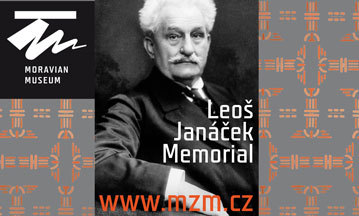L. Janáček – The Fiddler’s Child
B. Bartók – Piano concerto no. 2, Music for strings, percussion and celeste
Conductor: Tomáš Brauner
Piano: Ivo Kahánek
PKF - Prague Philharmonic
Encouraged by the conductor of the Prague Philharmonic to write a new orchestral work, Janáček composed The Fiddler’s Child, a ballad for orchestra, between 1912 and 1914. It was based on a poem of the same name by Svatopluk Čech, which the composer adapted to suit his nature as a dramatist and his social conscience:
In a hut a lonely fiddler dies, leaving behind his violin and a sick child in a cradle. Through his mercilessness, a powerful mayor, inspiring fear and awe, embodies the presentiment of a bleak ending. The fiddler appears before the sick child and with his violin solo lures the child towards him, but in reality he is leading him into the arms of death.
The premiere of the work in 1914 was cancelled (the orchestra was unable to master the piece) and so the first performance did not take place until 1917, when it was given by the Prague Philharmonic under the baton of O. Ostrčil.
Béla Bartók’s Second Piano Concerto (1931) is a piece which aptly characterizes the composer’s departure from the usual thematic forms and inclination towards smaller-scale motifs. The soloist’s part is incredibly demanding in terms of virtuosity and technical difficulty. In the three-part concerto the opening movement is principally led by the pianist, then in the second movement the composer brings in the string section with a meditative choral tone in a dialogue with the motoric passages for the piano. The closing Allegro molto uses material from the opening movement, thus underlining the expressionist character of the whole composition. At the premiere of the work (1933) the composer himself took the role of the soloist.
Two groups of strings, percussion, xylophone, celesta, piano and harp – this was the instrumentation Bartók specified for his Music for Strings, Percussion and Celesta from 1936. The composition, which was dedicated to Paul Sacher and the Basel Chamber Orchestra, is considered to be the high point in the composer’s attempts to present a unique synthesis of the so-called “new music” of the first half of the 20th century. The instrumentation itself and its use in the piece produces an unusual soundscape; a central role is played here by the solo and percussion instruments, while the two string groups sometimes play together and sometimes independently. This piece also reveals the composer’s lifelong admiration of the fugue, which is the guiding principle of the first movement. The next movement has more of a folk and dance character, which then changes to a colourfully rich nocturne-like Adagio; the final section uses the theme from the opening, a light folk theme, and ends with the hymnal fugue.





